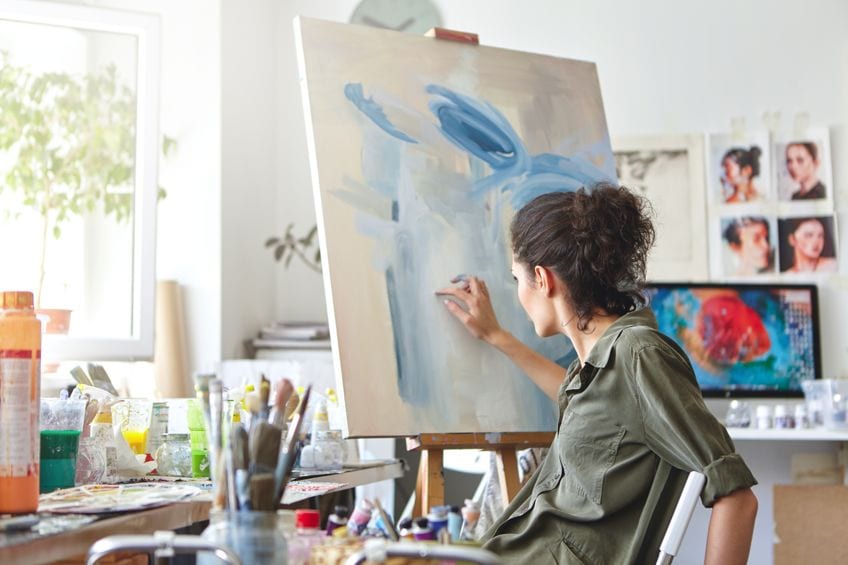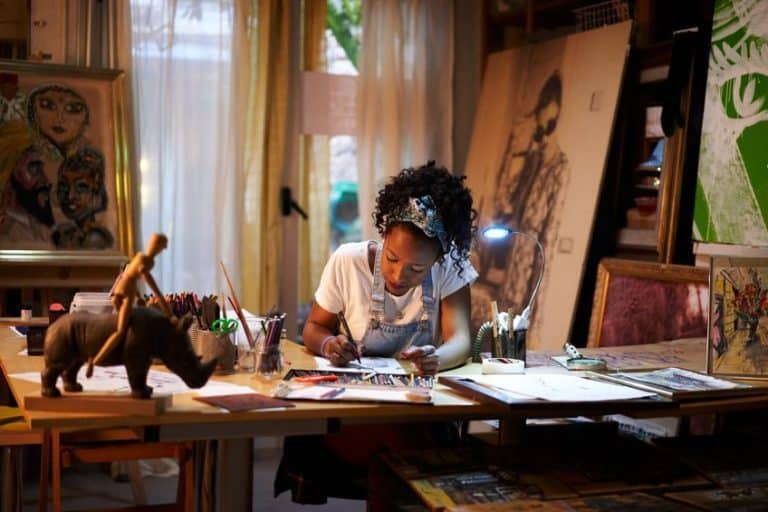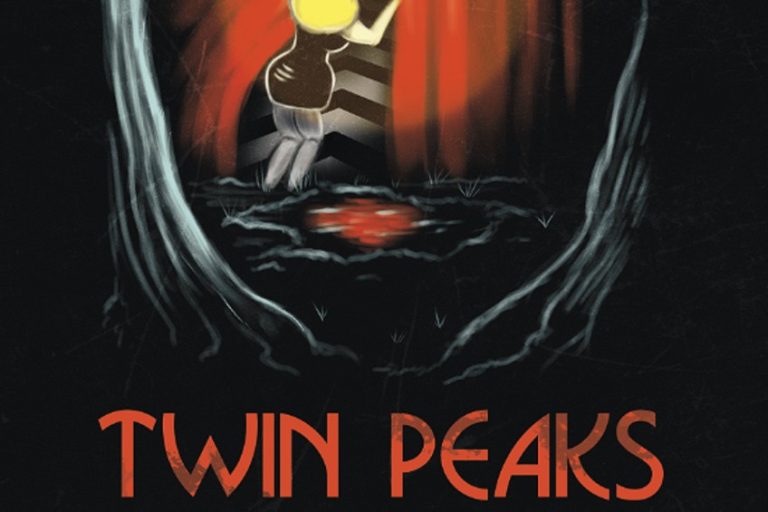How to Be Creative – Our Tips on How to Find Your Creativity
An article written in 1990 by Larry Boone and Thomas Hollingsworth for St. John’s University mentions five stages of the creative process, namely, preparation, concentration, incubation, illumination, and verification. While it may sound as simple as one, two, three, great artists are not forged in a day and sometimes, it takes a combination of methods to kickstart your creative juices! Luckily for you, listed below are a bunch of great ideas that will help you understand the fundamentals of creativity and unleash your creative potential.
Being Creative: What Does It Mean?
Being creative does not mean you have to be exceptional at an art form or follow a list of golden rules to methodically emerge as a creative individual. You can find traces of creativity all around your environment – even in the most basic household objects. After all, to invent something requires some level of creative thinking, right?
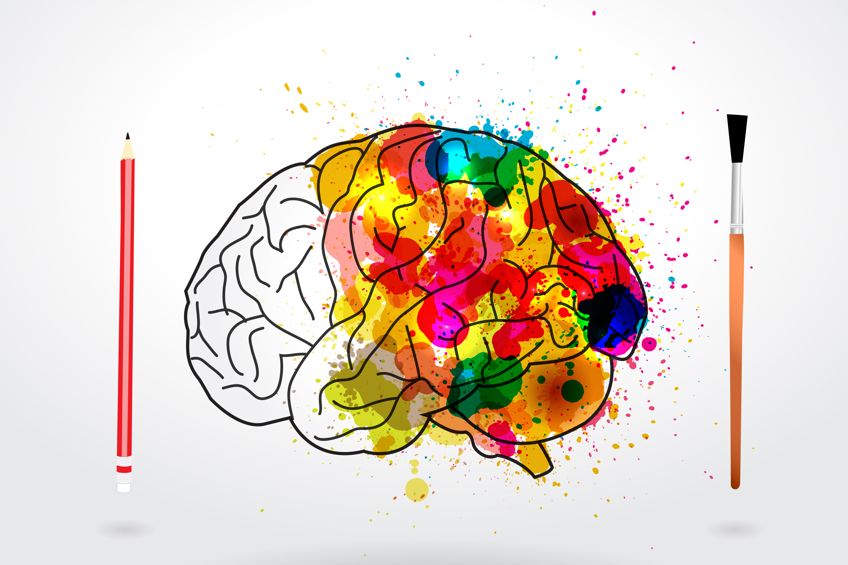
There is no universal definition for what it means to be creative, but there are guidelines that can help you learn how to get creative and activate creative thinking. Creative thinking is the backbone of what it means to foster your creativity and “think outside the box”. While it may seem daunting, especially if you do not consider yourself to be a creative individual but still want to explore what creativity means, then this is the article for you.
How Do You Become Creative?
The guidelines or “directives” for being creative involve fostering a sense of “open-mindedness”. Say, for example, you are researching a subject that traditionally falls under a particular discipline; however, you want your research to convey something unique, not found within that discipline, but perhaps by searching outside of the traditional discipline, you might find extra insight on the subject.
As in the multiple facets of life, there are intersections, and so too can you apply the idea of intersecting themes to the way your mind works.
Basic psychology studies teach that the brain is divided into the left- and right-hand sides, whereby certain aspects of our personality show up. This involves left-dominant people who are more logical, analytical, and methodical in thinking versus right-dominant thinkers who tend to be more creative or divergent in thought. This can go both ways meaning a person can use their logical and creative genius together. That makes sense, right? You can be creative too! Read on for more ways to be creative.
How to Find Your Creativity
There is no one path to landing up at your desired destination, that is, creative practice. Perhaps you can begin to think of creativity and locate it as an art practice. Most commonly thought of as a driving force, why not use it as a tool or project goal while making it the basis of exploring art? On a practical level, finding your creativity may span from performing a series of mental and physical exercises to small projects that can help you learn how to get creative.

Conquering Your Mind
As much as creativity is depicted as the physical manifestation through paintings, literature, music, and technological innovation, it is important to remember that every thought counts. This is why it is key to start with the powerhouse of idea generation, that is, the mind. The complexity of the human mind is what makes our species stand out.
Creative thinking and artistic expression have existed among modern humans for thousands of years, so it is not too late to overcome your seasonal creative block.
Grant Yourself Permission to Make
The first step to being creative may be as simple as granting yourself permission to be creative such that you release any negative thoughts and reasoning around why you are unable to be creative. These thoughts can sound like “I do not have the time”, “I am just not artistically inclined”, and “How can I be creative without being judged?” These are natural thoughts that may flood your mind and add to your anxiety but the gateway to embracing creativity starts with your self-talk. Turn your “I do not have time” into “I would like to make time”.

By shifting your focus away from what you do not have or the restrictions that you feel are in the way of your creativity, you reprogram your mind to start thinking more openly and “allow” room for alternative thoughts. If an idea is different from other ideas you feel you can easily generate, then that would place your idea as a creative idea. It is even more important to view creativity as something that is not cemented, therefore, the product of what is called “creativity” cannot look the same.
Many people mistake the idea of being a creative person as being bold and colorful, with a paintbrush in hand and a strong grasp of technique and application of the medium. This could not be further from the heart of creativity.
“Seek and Ye Shall Find”: Inspiration Is the Best Preparation
Once you have gathered the courage to retune your mindset into embracing creativity with a positive attitude, your next step is to seek out inspiration. No matter the level of skill you may categorize yourself in, finding inspiration is one of the best ways to fuel your creativity. There is a multitude of sources to find inspiration and the most common source is the internet.

Social media platforms such as Instagram and TikTok contain a tags feature that allows you to search up any word (search up your interest) and you will be able to view the related visual content through reels and posts. Other platforms like YouTube offer loads of tutorials on almost anything! While access to visual content for inspiration is the easy part, you may struggle with defining what it is you want to take interest in to start creating. To resolve this “blockage”, try moving your body since being trapped in your mind with your creative block can hinder your ability to create out of joy.
Removing the blockage could be as simple as taking a walk, taking a short drive, or whatever helps you destress and recenter your mind.
The Structured Approach
One of the best ways to learn how to be more creative is to enroll in a creative course. Many people find that a structured approach to learning creative skills solidifies your skill in the long haul and offers more safety than self-learning. There are many online classes and courses offering a bunch of creative learning courses for a reasonable price. Taking the time to invest in your creativity is one of the most rewarding things you can do. In pursuing a creative talent, you can also gain new skills which can be used to enhance your personal development.

Some examples of creative courses or skills can involve enrolling in courses related to photography, editing software, creative writing, pottery, screen-printing, graphic design, sculpture, and painting. These creative outlets do not have to be restricted to the art domain. There is room to explore creativity in other technically focused areas of learning such as 3D printing, interactive development, creative architecture, and even creative science.
Creativity in science may sound odd, however, Albert Einstein would disagree claiming that “the greatest scientists are artists as well”.
Fashion and Color Psychology
Honing your sense of fashion and style can contribute to imaginative ways of thinking and inform your learning journey on how to find your creativity. If you do not consider yourself particularly “fashionable” or “America’s next top model”, but are interested in what fashion and style have to do with creativity – stick around!
The art of fashion moves beyond just piecing together an ensemble of your own personal expression. Like painting, color plays an important role in presentation and psychology. Jumpstarting your creativity can be as simple as unpacking your personality and integrating it into your everyday apparel.

Think about your favorite fashion movement or era and make it a part of your new personal project by dressing as your personality. If that does not sound appealing to you and you prefer a more tactical approach, it may be beneficial to play with color psychology and the art of using color to influence the way that you are perceived. If first impressions are your main focus, give it a try! Color psychology is defined by the influence of colors on human functioning and behavior such that it carries the power to sway your mood and the mood of others.
According to researchers, it has been discovered that early Chinese and Egyptians engaged in a practice called chromotherapy which involved the use of color as a healing mechanism for soothing ailments and assisting people with improving blood circulation.
Color Psychology in Art
Color psychology extends beyond fashion and is a creative way to not only curate your wardrobe while influencing your mood and environment, but it is also a major determinant of some of the most successful art pieces in history.
According to a paper written by Ali Redha Hussain, color psychology is best demonstrated by masterpieces such as Piet Mondrian’s Place de la Concorde (1938-1943) and Edvard Munch’s The Scream (1910). These are good examples from which you can begin to understand the application of color psychology within the arts.
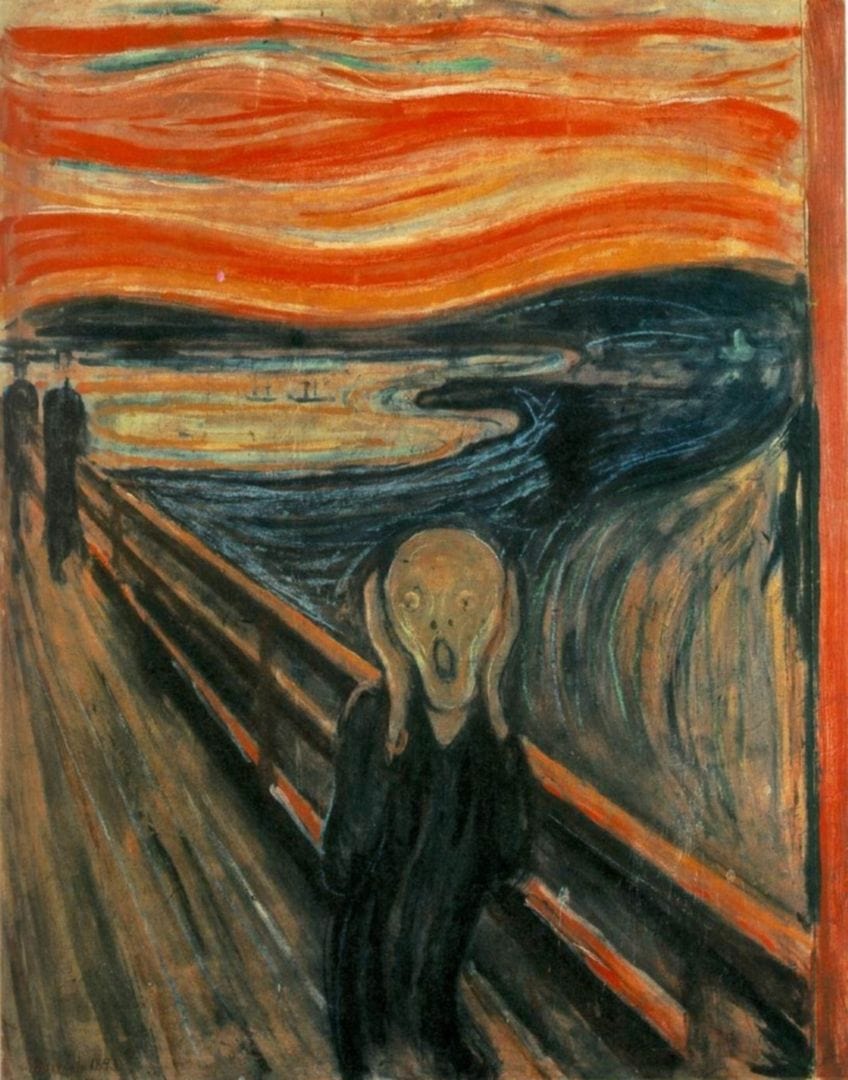
While early work by Mondrian expressed a level of suppression of emotions, Place de la Concorde was a turning point in that it was not only executed in both Paris and New York, but it is where the artist leveraged color psychology and altered the painting by adding bolder colors and including “unbounded color planes”.
The cold yellow block was an addition meant to evoke positivity, possibly the optimistic hope that Mondrian moved forward with to propel bolder aesthetics into the art world. On the other end of the spectrum, Munch’s The Scream is informed by a “darker” aesthetic showcased through his choice of color combined with his aggressive brush style.
As Hussain states upon analysis of the colors and in line with Munch’s history of alcoholism and “internal torment”, it is easy to see how the garish red sky and pale blue man screaming mirrors the expressionist’s emotions.
Channeling Creativity via Journaling
By observing the way that color psychology can be used in fashion and art makes for an exciting way to frame your creative venture and encourages a state of “open-mindedness” as mentioned earlier. If color is not your forte, you may enjoy journaling. Grab your spare notebook and a comfortable pen and start penning down those thoughts!

For those who tend to overthink and overanalyze, journaling proves to not only be a creative tool for creative writing, but it also allows you to organize your thoughts while acting as a therapeutic outlet for your daily troubles. While you are at it, feel free to incorporate doodling onto your notes for added creativity. Doodling can sometimes serve as the draft version of what could be an incredible artwork realized on a larger scale.
Use Your Smartphone
You may already have all the tools you need. As long as your smartphone has a camera, you might enjoy snapping away images of your favorite objects or things and using the images to crop them into your own digital collage. Experimenting with your device’s camera and basic editing software, you can piece together some of the most aesthetically pleasing collages. If you have no idea of what to photograph, a better option would be to select a color you want to capture and snap away images of objects that match that color or vary in shade.
This way you build up your own color palette from which you can use to digitally chop and change.
Pick Up a New Language
This method of learning how to be more creative involves learning itself! Learning a new language is a great social skill to add to your agenda since it encourages language development. With practice, patience, and time, picking up a new language will introduce you to different ways of pronunciation, new words, and alternative language structures. Take your time with this activity and try to integrate language learning applications such as DuoLingo to ease the challenge.

Turn on the Television
Growing up, you may have heard “turn off the television!” from your parents, but for the sake of finding ways to be creative, you can sit back and find a new series or movie to watch. Even better if you are invested in a foreign-language series such as K-dramas, you will find this method a breeze and you may even pick up words from the new language.
Talk about killing two birds with one stone!
Turn Up the Volume
You may have even been told that listening to classical music helps you focus and study better. Music is a great stress reliever to remove you from the ups and downs of life so why not get into the groove and flex your creative muscles? Research conducted in 2017 by the PLOS ONE journal suggests that music does in fact have a positive effect on your creativity. This of course depends on the music itself. It was found that “happy music”, which produced happy emotions, increased the number of ideas generated. While it is still debated whether or not happy beats encourage divergent thinking, feel free to follow what works for you!

Making Connections
Drawing remote associations between randomly selected objects is one of the most exciting activities you can try to develop your creative thinking skills. A way that you can try this is by selecting a random number, turning to your bookshelf, and noting down the first line of that page number from each book as material to draw connections between.
By engaging your mind to make connections between seemingly random objects, you promote a creative thought process and this, in turn, helps remove thinking formed by a “one-track” mind.
What Do the Experts Say?
Curiosity may have killed the cat but in this case, curiosity is the key to stimulation. American Psychologist and expert on creativity, Robert Keith Sawyer identifies numerous methods that help stimulate creativity. In his blog, Learning In and Through the Arts, Sawyer states that all disciplines can benefit individuals (particularly students) by simply learning how to be creative. Some suggestions on learning how to be creative include the following:

Creation and Reinterpretation
This approach involves allowing yourself to create something with an intention but once finished, you would have to get rid of the original intention and repurpose the creation for use in another intended area, as opposed to the original plan. This activity prepares you for a change in plan and helps you to adapt.
Adaptation is part of change and also requires a degree of creativity to adapt to the environment or situation.
Questions, Questions, and More Questions
A method that you can always come back to is the continuous questioning method which involves numbing your thinking initially. Start with one question and then list out 10 additional questions that mean the same as the first question. By using the method of the questions, your brain is rushed into pushing for 10 different variations of the same question and by setting a time limit and slowly decreasing it, you can eventually train your mind to think of variations in everyday objects and scenarios.

Criticism and Problem-Solving
Another great suggestion on how to find your creativity is to look for products or situations which carry a lot of flaws (this can be imperfections or design flaws) and list out all the areas of the situation or product that you feel are errors or could have been executed better. This method employs using criticism as a stepping stone for improving something. This way you are not just stuck listing all the things you hate about something, rather, you are encouraged to turn it around and ideate ways in which you think you could enhance something.
This back and forth dynamic, practiced regularly will enhance your problem-solving skills.
Simple Ways to Be Creative
If delving into color psychology or finding the right music sounds overwhelming to you, you may want to try out simpler approaches that involve less technology and more fun. Here are some effortless yet effective ways to be more creative.

Embrace Your Inner Child
Go back to basics and scan your memory to engage in some childhood activities you enjoyed as a child. Starting off with the basics such as drawing with crayons, using adult coloring books, or getting some sunshine will surely boost your mood and in turn set free your child-like wonder for creation. While you are at it, try a few easy art activities such as making your own slime, playing with Play-Doh, or building a sandcastle.
Turning this into a group activity can also add loads more fun to the equation!
Less Is More: Do Nothing!
That is right! Simply switching off from technology and making time for productive rest will allow your mind to relax. Other ways of getting your mind to relax include listening to online meditations and positive affirmation audios to declutter your mind and release your creative inhibitions.

Socialize for Fun
In an era driven by social media and technology, socializing can be difficult at times. More specifically, engaging with people of different backgrounds and cultures can inspire you to think outside of the bubble that you are familiar with. Gaining insights into another person’s lifestyle, culture, or hobbies can introduce you to alternative ways of doing things and even help improve your current routine.
Creativity definitely goes a long way!
Brainstorm
Similar to the method of drawing connections, by choosing a topic and creating a brainstorming diagram, you can improve your idea generation capabilities. Try to add as many branches off the main topic and jot down any related ideas or topics as you can think of! Aside from generating connections and new ideas, brainstorming is an effective way to problem solve and come up with creative solutions for almost any problem.

Memo Mayhem?
Memory and recall may not be the most reliable way of storing information since many are bombarded with content on a daily basis. Have you ever had a really good idea that was perfect in theory but not for the situation you needed it for? There is no need to throw ideas away or store it in the back of your mind! Great ideas should always be documented and the memo application on your smartphone, tablet, or old-fashioned paper, is the best place to write them down. Pro tip: As soon as you get the idea, write it down!
This way you can always come back to it and be prepared for the right scenario.
Move Your Body
Activating those creative muscles also includes activating your physical body. By stepping outside of your head and into your body, you can temporarily deactivate the mind and allow yourself to release any stress or tension stored up in your body. Whether you take on a new Pilates class or sign up for a cool dancing class, including physical activity in your weekly regime is sure to remove artistic stagnancy.

Become a Meme Queen (or King)
If the idea of painting and drawing scares you, why not try your luck at creating in a different way by using your sense of humor? Memes have taken over the internet and are a part of our everyday lives. This is a fun way to make light of particularly difficult situations, given your creations are not bordering on hate speech or discrimination. The creativity behind meme-making is endless and one does not need much experience, other than humor, a meme-making app, and possibly your favorite dad joke.
Laughter is the best outlet and encourages “happy emotions”, which in turn benefit your ability to think alternatively.
Take Yourself Out on A Date!
A date does not have to be reserved for pairs. Going solo is definitely a top-tier activity to consider, especially if you are feeling down in the dumps about your creative potential. If you have no idea where to begin planning your solo date, try thinking of the ideal date you would like to go on if you had a partner. Then throw the idea that you need a partner away and embrace the present moment. There is no other better time than the present to treat yourself with a little extra care. Set a date and book your trip to that museum you always wanted to visit. Who knows? You may meet your soulmate there too!

Try Origami
Originally an art form practiced in Japan, origami involves using specific sizes of paper, folded into different mini objects and animals. This paper-folding process can range from simple creations such as a cat and a fish to more complex representations such as a trash can with a moving lid and a Christmas tree. The potential is endless but well worth your investment!
Creativity does not have to be cut out for the artists and professionals. Creativity can be conquered by anyone and with a little patience, time, practice, and fun, you too can unlock your creative potential! Of the many ways to be creative, which one was your favorite?
Frequently Asked Questions
What Impact Does Creativity Have on Daily Life?
Creativity is known to be a stress reliever as this is manifested in different ways, not exclusively within the arts sector. Creativity has a multitude of benefits that impact your experience of daily life. This includes paving the way for new ways of thinking which allows you to enhance your abilities to problem solve, generate effective ideas, boost focus, destress, design creative solutions quicker, and bring more happiness to your routine.
What Does It Mean to Be More Creative?
To be creative implies that you apply divergent thinking. This involves engaging in activities considered artistic and can also be thought of as alternative ways of thinking for different purposes. Creativity has no one set meaning and is practiced across a range of disciplines, including science, technology, music, literature, and many others.
What Activities Encourage Creativity?
There are numerous activities to engage in to be more creative. This can range from simple activities such as watching television, abstract painting, and engaging in simple crafts to activities that require more effort such as learning a new language or enrolling in a creative course.
What Is the Most Effective Method to Learn Creative Thinking?
Among the many methods to learning how to be more creative and activate your creative thinking, participating in activities that stimulate your divergent thinking includes leveraging the questions method (as discussed above), along with other methods such as brainstorming, making remote connections, product criticism and problem-solving, and any activity that can reprogram your mind to not only think of a scenario in one way but to evolve an idea into multiple alternative ideas.
What Is Color Psychology?
Color Psychology refers to the use of color and its impact on human behavior. Color psychology suggests that colors evoke different emotional or behavioral reactions which can influence your mood. For example, the color white is generally associated with purity and peace, whereas the color yellow is a bright, attention-grabbing color that evokes a sense of happiness and logic, and can also inspire optimism.
Why Is Creativity So Important?
Creativity is important to human development and most importantly child development. By learning how to be creative, you also learn valuable life skills that can contribute to your success in your career and daily life. The value that creativity brings stretches from maintaining good mental health, improving your immune system, improving focus and problem-solving abilities, and most importantly, it adds to your happiness!
How Does Creativity Make You Smarter?
Participating in creative projects contributes to that boost of dopamine, which supports that so-called feel-good sensation you get when you remove yourself from stressful tasks. Creativity in music is also linked to brain function. There are multiple studies that prove that people who can play instruments demonstrate a strong connection between the right and left sides of their brain. This back-and-forth correspondence between the two sides of the brain is what enhances cognitive functioning.
Nicolene Burger is a South African multi-media artist, working primarily in oil paint and performance art. She received her BA (Visual Arts) from Stellenbosch University in 2017. In 2018, Burger showed in Masan, South Korea as part of the Rhizome Artist Residency. She was selected to take part in the 2019 ICA Live Art Workshop, receiving training from art experts all around the world. In 2019 Burger opened her first solo exhibition of paintings titled, Painted Mantras, at GUS Gallery and facilitated a group collaboration project titled, Take Flight, selected to be part of Infecting the City Live Art Festival. At the moment, Nicolene is completing a practice-based master’s degree in Theatre and Performance at the University of Cape Town.
In 2020, Nicolene created a series of ZOOM performances with Lumkile Mzayiya called, Evoked?. These performances led her to create exclusive performances from her home in 2021 to accommodate the mid-pandemic audience. She also started focusing more on the sustainability of creative practices in the last 3 years and now offers creative coaching sessions to artists of all kinds. By sharing what she has learned from a 10-year practice, Burger hopes to relay more directly the sense of vulnerability with which she makes art and the core belief to her practice: Art is an immensely important and powerful bridge of communication that can offer understanding, healing and connection.
Nicolene writes our blog posts on art history with an emphasis on renowned artists and contemporary art. She also writes in the field of art industry. Her extensive artistic background and her studies in Fine and Studio Arts contribute to her expertise in the field.
Learn more about Nicolene Burger and the Art in Context Team.
Cite this Article
Nicolene, Burger, “How to Be Creative – Our Tips on How to Find Your Creativity.” Art in Context. July 18, 2022. URL: https://artincontext.org/how-to-be-creative/
Burger, N. (2022, 18 July). How to Be Creative – Our Tips on How to Find Your Creativity. Art in Context. https://artincontext.org/how-to-be-creative/
Burger, Nicolene. “How to Be Creative – Our Tips on How to Find Your Creativity.” Art in Context, July 18, 2022. https://artincontext.org/how-to-be-creative/.


